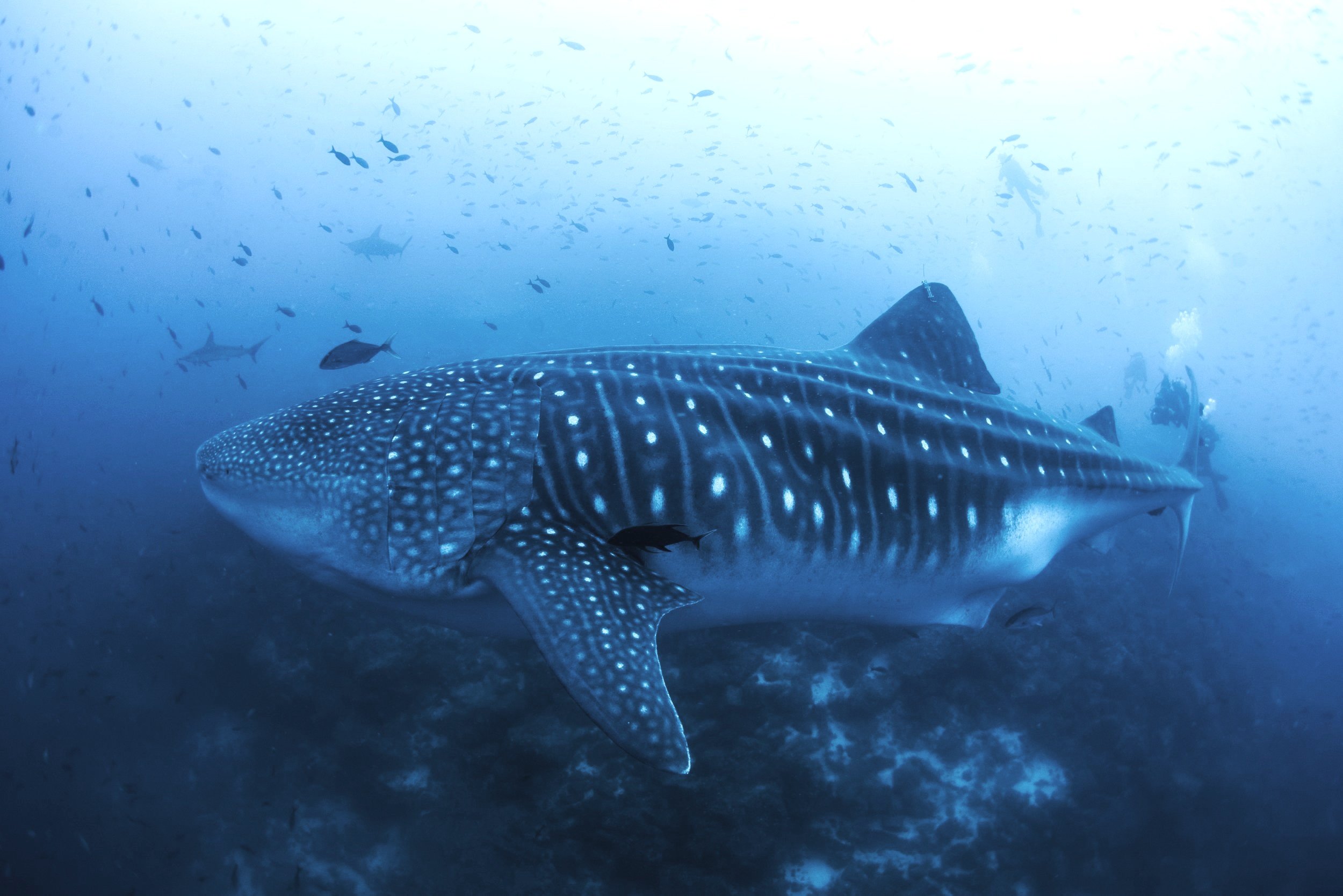End of the Line: Oceanic sharks and rays in 50-year decline
Blue Shark; Photo by Dr. Andrea Marshall
A devastating new study, published today in the eminent journal Nature, documents an alarming decline of oceanic shark and ray populations – 71% over the past 50 years – primarily due to overfishing. The study confirms fears that high levels of decline in pelagic sharks and rays are happening on a worldwide scale.
Led by the Global Shark Trends Project (GSTP), a collaboration of the Union for Conservation of Nature (IUCN) Shark Specialist Group, Simon Fraser University, James Cook University, and the Georgia Aquarium established with support from the Shark Conservation Fund, the paper analyzes research from across the globe to assess the extinction risk for oceanic sharks and rays.
Their risk of extinction not only jeopardizes the health of ocean ecosystems, it also impacts food security for all of us who depend on the sea for sustenance. According to the study, fishing pressure has doubled and catches have tripled, amounting to an 18-fold increase in Relative Fishing Pressure (exploitation relative to the number of fish left).
Thresher Shark Landing; Photo by Dr. Andrea Marshall
For all 31 oceanic shark and ray species assessed in the study, include manta rays and whale sharks, the risk of extinction has increased substantially since 1980. 75% of these iconic species now qualify as threatened with extinction under the IUCN Red List criteria. Even more alarmingly, half (16 of 31) of the oceanic shark and ray species assessed are considered Critically Endangered.
Contributing author Dr. Andrea Marshall provided critical data from the Marine Megafauna Foundation’s (MMF) 20-year research program in southern Mozambique which shows a steep decline in manta and devil ray sightings in Mozambique (greater than 90% decline from 2003 to 2016).
Dr. Marshall spearheaded the first manta ray research program in Africa and has been studying the population in Mozambique for half of her life. The southern Mozambican population, which is the largest population to be identified on the continent to date, has been decimated over the last decade and a half, with the biggest threat coming from direct and indirect fishing pressure.
Giant Manta Caught and Butchered by Fishery; Photo by Dr. Andrea Marshall
“As a conservation biologist, watching the decline in mobula rays (manta rays and devil rays) in Mozambique has been a living nightmare. It happened quicker than we could have ever imagined and it demonstrated to us that we need to take immediate action to curb threats to these animals, particularly within their most critical habitats.” -Dr. Andrea Marshall, MMF principal scientist
Dr. Andrea Marshall, who is also one of the co-founders of MMF, calls for strict, enforceable regulations in all oceans:
"Oceanic sharks and rays often suffer most severely from anthropogenic threats. Their preferred pelagic habitat is out of sight and out of mind. Unregulated or unsustainable fishing pressure is difficult to control in international waters, so it is no surprise that their populations are crashing globally. To reverse these trends we will need to figure out how to create strict and enforceable regulations in all oceans. We quite literally have run out of time; we must act now if we are to save remaining populations."
Large Group of Hammerhead Sharks in Mozambique; Photo by Dr. Andrea Marshall
Key findings:
The global abundance of oceanic sharks and rays has declined by nearly three-quarters (71%) over the last 50 years primarily due to overfishing.
The decline coincides with a doubling of fishing pressure and a tripling of catches, amounting to an 18-fold increase in Relative Fishing Pressure.
Three-quarters (75%) of sharks and rays now qualify as threatened with extinction under the International Union for Conservation of Nature (IUCN) Red List criteria.
The UN Sustainable Development Goals and specific Aichi Biodiversity Targets (to reverse population declines and use marine resources sustainably) for the year 2020 were not met for these species.
Notes to Editors
For questions about this press release, please contact:
Dr. Andrea Marshall - Principal Scientist, Marine Megafauna Foundation (Tofo, Mozambique)
Email: andrea@marinemegafauna.org
The Marine Megafauna Foundation (MMF) was created in 2009 to research, protect, and conserve the populations of threatened marine megafauna around the world. MMF’s headquarters are located in Tofo, Mozambique, where they operate as Associação Megafauna Marinha (AMM). ‘Megafauna’ are large marine species such as sharks, rays, and sea turtles. For further details, please see www.marinemegafaunafoundation.org or follow us on Twitter, Facebook, Instagram, and LinkedIn.













